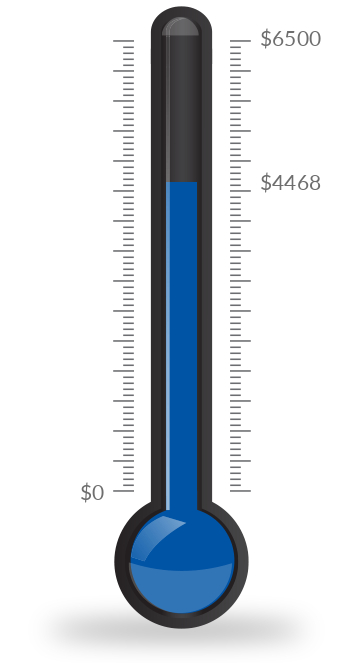Holy Incense Fundraiser

"I saw the Lord sitting on a throne, high and lifted up,
and the train of His robe filled the temple."
- Isaiah 6:1
The Blue Dye

High Priest's Blue Garments
(Image credit: The Temple Institute) |
|
In 1858, a French zoologist was sailing from Minorca, Spain to study marine life in the Mediterranean when he witnessed a fisherman on a nearby boat do something peculiar: he cracked open the shell of a snail that he'd
brought up in his nets and, to the amusement of his companions, was smearing his shirt with its slimy contents. As the zoologist watched, the streaks on the fisherman's shirt slowly changed from yellow to green and finally
to a deep purple. The zoologist instantly knew what he was witnessing—he'd read about this very thing in the works of Aristotle and Pliny the Elder. This, he thought, must be a glimpse into the ancient, long—lost art of
shellfish dyeing.
And so began a century-and-a-half-long quest—involving chemists, archaeologists, and Jewish rabbis, from New York to London to Jerusalem—to rediscover what had been lost for some 1,400 years: the mysterious Biblical blue
dye, called in Hebrew tekhelet. In 1985, the source of the long-lost dye was at long last positively identified as an obscure little sea snail named Murex trunculus. Now the Jews—who for a millennium and a
half and been forced to wear only black and white prayer shawls—could now don the beautiful Biblical blue, as commanded by God in the Book of Exodus. Even more compelling, the blue garments of the High Priest could now be
recreated as well, helping to pave the way for the rebuilding of the Holy Jewish Temple in Jerusalem.
In 1991, Israeli chemist Baruch Sterman, Ph.D., author of the highly-recommended book
The Rarest Blue: The Remarkable Story of an Ancient Color Lost to History and Rediscovered, along
with several companions established Ptil Tekhelet near Jerusalem for the purpose of studying tekhelet and producing the blue dye for the public, and also
to The Temple Institute for the creation of the priestly garments, including those that will one day soon be worn by the High Priest in the Third
Temple.
|
The Missing Spice
And so, the Biblical blue dye has been rediscovered, but another mystery still looms, and until it is solved Temple service—when the Third Temple is at long last built on Jerusalem's Temple Mount—simply cannot resume. When
God spoke to Moses on Mount Sinai (when Moses was given the Ten Commandments), in addition to issuing the command of tekhelet, the blue dye, God also conveyed a precise recipe for the Holy Incense that would be used
twice daily in the Temple and once per year (on the Day of Atonement, Yom Kippur) within the Holy of Holies, before the Ark of the Covenant. God spoke four main ingredients, but the identity of one of these—like the
source of tekhelet—was lost following the destruction of the Holy Temple (the Second Temple) some 2,000 years ago. In the Greek, this mysterious ingredient is called onycha; in Hebrew, it is shechelet
(which happens to rhyme with tekhelet).
The true source of shechelet has remained the subject of much debate over the centuries, but in 2017, hints—given in the Talmud, provided by scholars such as Josephus and Maimonides, and suggested by the techniques
of incense makers from North Africa to the Far East—pointed Australian marine biologist Dr. Kirsten Benkendorff toward an anatomical feature of sea snails called the operculum (a sort of trap door that some snails
use to protect themselves). Dr. Benkendorff, along with several colleagues at Australia's Southern Cross University, engineered a method for conducting
detailed chemical analysis of the opercula of Dicathais orbita (Australian murex)—a sea snail that is found along the coasts of Australia and New Zealand—and found volatile antioxidant compounds that can
prolong scent, making the opercula a good candidate as the source for shechelet.
|
|

Yom Kippur Incense Offering
(Image credit: The Temple Institute) |
The Proposal
When Baruch was writing his book, which was published the same year that Kirsten published her
scientific paper, Baruch contacted Kirsten. The idea of collaboration was raised and plans for a trip to the Holy Land for Kirsten was discussed.
In the end, however, funding was not secured and the idea faded.
I believe that Kirsten and Baruch need to collaborate in person in order to pursue together the answer to an intriguing question: is Murex trunculus the source of both tekhelet and shechelet? If Kirsten
and Baruch are able to answer this question in the affirmative with any degree of certainty, then the next step (and perhaps the subject of a future fundraising effort) may be to do something that has not been tried in
2,000 years: formulate and test the Holy Incense.
The total amount that I would like to raise in order to fund Kirsten's research trip to Baruch's headquarters in Israel, and to facilitate collaboration between these two impressive scientists, is
$6,500.
Friends, I believe that we are living in the last of the Last Days and that soon the Third Temple will be built on the Temple Mount in Jerusalem. Identifying the ingredients of shechelet, the Holy Incense, is an
important step along this journey. Would you like to help us make Biblical history? Click the "Donate" button below to make your donation via PayPal, or contact me at
ryan@thesefinaldays.org for alternative ways to contribute, and thank you—and God bless you—for taking part in this exciting endeavor!

|
|

Amount raised as of 12/22/25: $4,468
|
100% of the funds raised for the Holy Incense Project will go directly toward the scientific collaboration described herein.
These Final Days Ministries is a registered 501(c)(3) non-profit organization, so you can give with confidence.
If you would like to read Dr. Benkendorff's research paper, you may find it here: Volatile and bioactive compounds in opercula from Muricidae molluscs supports their use in ceremonial incense and traditional medicines
|




